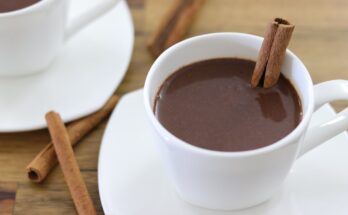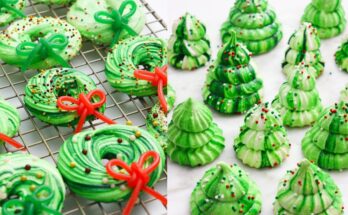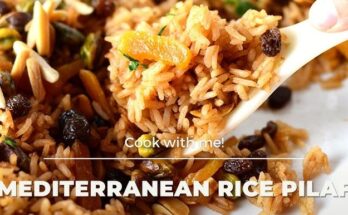Meal Prep Recipes for Weight Loss: Meal prepping is the practice of planning and preparing meals in advance, typically for the upcoming week. Instead of scrambling for something quick and unhealthy when hunger hits, you have ready-to-eat or easy-to-reheat meals waiting for you. It’s like putting your nutrition on autopilot, ensuring you’re always one step ahead of cravings and temptation. Imagine opening your fridge and finding neatly packed, nutritious meals instead of just random leftovers. That’s the magic of meal prep.
This concept can take various forms. For some, it’s about cooking entire meals in advance and storing them in portion-sized containers. For others, it’s just about chopping ingredients or cooking proteins ahead of time to speed up cooking later. Regardless of your method, meal prepping is a strategic approach to eating that can massively help you stick to your weight loss goals.
Why Meal Prep Works for Weight Loss
Meal prep isn’t just a trendy Instagram thing—it’s actually a powerful tool for anyone trying to shed pounds. The key reason it works so well for weight loss is that it eliminates guesswork. When your meals are already planned and prepped, you’re much less likely to grab fast food or snack mindlessly. Every meal is accounted for, and each portion is tailored to fit your dietary goals.
Plus, when you’re prepping your own meals, you control exactly what goes into them. No hidden oils, sugars, or oversized portions. It becomes much easier to stick to a calorie deficit—the golden rule of weight loss—when you’re the one holding the measuring cups and cooking spoons.
Benefits of Meal Prepping
Portion Control
Portion control is one of the most powerful aspects of meal prepping. When you cook and pack your meals ahead of time, you naturally control the quantity you’re eating. No more heaping plates of pasta or “eyeballing” your servings. You know exactly how much protein, carbs, and fats you’re consuming, which is crucial for staying in a calorie deficit.
Let’s face it—it’s incredibly easy to overeat, especially when you’re eating out or winging your meals. A “healthy” salad from a restaurant can secretly pack over 800 calories thanks to toppings and dressings. When you meal prep, you decide the serving size and ingredients. It’s basically weight management in a Tupperware.
Reducing Impulsive Eating
Raise your hand if you’ve ever reached for chips or cookies just because there was “nothing else” to eat. That’s impulsive eating in action, and it’s a major roadblock for weight loss. Meal prepping solves this problem by giving you a game plan. When hunger strikes, you’ve got a healthy meal ready to go.
Instead of debating whether to DoorDash a burger or microwave frozen pizza, you simply reheat your prepped grilled chicken and veggies. It’s decision-making made easy. And when the right choices are convenient, you’re far more likely to make them consistently.
Saving Time and Money
One of the underrated benefits of meal prepping? It saves both time and money—two things everyone could use more of. Think about it: cooking in batches once or twice a week takes less time than making individual meals every day. You do one grocery trip, one cooking session, and boom—you’re set for the week.
Financially, it’s a win too. When you plan meals, you buy only what you need, reducing food waste. Plus, eating at home is almost always cheaper than takeout or restaurant dining. That means you can eat healthy, lose weight, and save a nice chunk of change in the process.
Key Principles of Effective Weight Loss Meal Prep
Balanced Macronutrients
To truly make meal prep work for weight loss, it’s not just about eating less—it’s about eating smart. This starts with balancing your macronutrients: protein, carbohydrates, and fats. Each plays a key role in your energy levels, metabolism, and satiety.
Protein is your best friend in weight loss. It keeps you full longer, helps preserve muscle mass, and burns more calories during digestion. Aim to include lean proteins like chicken breast, tofu, turkey, or legumes in every meal.
Carbs often get a bad rep, but complex carbs like brown rice, quinoa, and sweet potatoes provide steady energy and are packed with fiber. Fats, especially healthy ones like avocado, olive oil, and nuts, are essential for hormone function and satisfaction.
When you prep meals that combine all three in proper portions, you’re giving your body everything it needs—without going overboard.
Low-Calorie, High-Volume Foods
One of the easiest hacks for feeling full on fewer calories? Load up on low-calorie, high-volume foods. Think leafy greens, cucumbers, zucchini, cauliflower rice, and broth-based soups. These foods fill your plate and your stomach without adding hundreds of calories.
A giant salad topped with grilled chicken, cucumbers, bell peppers, and a light vinaigrette feels like a feast—but might only clock in at 300–400 calories. That’s the beauty of volume eating. Your body feels satisfied because of the physical volume of food, even though the calorie count stays low.
Using this trick in meal prep can help you stay full and happy while still losing weight.
Smart Snacking
Snacking isn’t the enemy—it’s the type of snack that can make or break your goals. Instead of reaching for chips or candy, prep smart snacks like cut veggies with hummus, boiled eggs, or Greek yogurt with berries.
Having these snacks ready in your fridge means you’re far less likely to make poor choices when hunger strikes. It’s all about keeping your blood sugar steady and your cravings in check.
Top Meal Prep Recipes for Weight Loss
Breakfast: Overnight Oats with Chia Seeds and Berries
Kickstarting your day with a nutritious breakfast can make all the difference when you’re trying to lose weight. Overnight oats are a meal prep superstar: they’re easy to make in batches, super versatile, and packed with fiber and nutrients. This recipe features rolled oats, chia seeds, almond milk, and fresh berries—a combination that keeps you full and fuels your morning.
To prep, combine 1/2 cup of oats, 1 tablespoon of chia seeds, and 1 cup of unsweetened almond milk in a mason jar or container. Add a handful of mixed berries—like blueberries, strawberries, or raspberries—for natural sweetness and antioxidants. You can also add a spoonful of Greek yogurt for extra protein. Let it sit overnight in the fridge, and it’s ready to eat in the morning. Add a sprinkle of cinnamon or a few crushed nuts if you want more texture and flavor.
Why does this recipe work for weight loss? It’s high in fiber and protein, which both promote satiety. Chia seeds expand in your stomach, keeping you full longer, while oats provide slow-releasing carbs for sustained energy. Best of all, you can prep multiple jars at once, saving time and setting a positive tone for your day.
Lunch: Grilled Chicken Quinoa Bowl
Lunch is often the trickiest meal to stay healthy with—especially if you’re stuck at work or on the go. But with a little prep, you can enjoy a satisfying, balanced bowl that keeps you energized and on track. A grilled chicken quinoa bowl is a meal prep classic that never fails.
Start by cooking a batch of quinoa, a protein-rich whole grain that adds texture and fiber. While that’s cooking, grill some skinless chicken breasts seasoned with garlic, paprika, and a pinch of sea salt. Slice the chicken and pair it with quinoa, roasted veggies (like bell peppers, zucchini, and broccoli), and a simple lemon-tahini dressing.
This combo delivers lean protein, complex carbs, and a rainbow of vitamins and minerals. The healthy fats from the tahini dressing keep the meal satisfying, so you’re less tempted to snack afterward. You can store these bowls in individual containers for up to four days—just grab and go!
This dish is a great reminder that healthy doesn’t mean boring. Each bite is flavorful, nutrient-packed, and perfectly portioned to help you stay within your calorie range.
Dinner: Baked Salmon with Roasted Veggies
Dinner is the time when cravings peak and motivation dips, making it prime territory for unhealthy eating. That’s why prepping a delicious, easy-to-reheat dinner like baked salmon and roasted veggies is a game changer. It’s gourmet-level food without the last-minute fuss.
For this recipe, bake salmon fillets in foil with a squeeze of lemon, a drizzle of olive oil, garlic, and dill. While the salmon bakes, roast your favorite vegetables—think carrots, Brussels sprouts, cauliflower, and bell peppers—with a touch of olive oil and your favorite herbs. Everything cooks in under 30 minutes and holds up well in the fridge.
Salmon is rich in omega-3 fatty acids, which support metabolism and reduce inflammation. It’s also one of the most filling proteins out there, making it ideal for dinner. Pairing it with high-volume veggies means you can eat a large plate of food while still staying in a calorie deficit.
Store the salmon and veggies in meal prep containers and reheat for a quick, healthy dinner all week. You’ll be amazed at how easy it is to stay on track when your dinner is already waiting for you.
Snack: Greek Yogurt with Nuts and Honey
Snacks often make or break a diet. The key is to plan for them in advance, just like meals. Greek yogurt with nuts and honey is a great prep-friendly snack that offers the perfect blend of protein, healthy fats, and natural sweetness.
Greek yogurt is high in protein, helping you feel full and reducing the urge to overeat later. Choose the plain, unsweetened kind to avoid added sugars. Add a handful of raw almonds or walnuts for crunch and healthy fats. Then drizzle a little raw honey on top for just the right amount of sweetness.
You can portion these out in small containers for grab-and-go convenience. For extra flavor and nutrients, top with cinnamon, chia seeds, or sliced banana. This snack feels indulgent but is perfectly balanced for weight loss.
It’s especially great for that afternoon slump when energy drops and cravings spike. With just a few bites, you’re back on track and satisfied without blowing your daily calorie budget.
Final Tips for Success with Meal Prepping for Weight Loss
Meal prepping is a powerful tool, but like any strategy, it works best when you fine-tune it to fit your lifestyle. To truly succeed, it’s important to build a system that’s sustainable, enjoyable, and realistic for your day-to-day routine.
First, keep it simple. You don’t need to prep 10 gourmet dishes every Sunday. Stick with three to five core meals that you rotate weekly. Choose recipes with overlapping ingredients to cut down on grocery costs and cooking time. For example, grilled chicken can be used in quinoa bowls, salads, or wraps throughout the week.
Next, invest in quality containers. Choose BPA-free plastic or glass containers with compartments to keep meals fresh and well-organized. This makes portion control effortless and minimizes food waste. Labeling containers with the prep date helps you stay on top of freshness and food safety.
Don’t forget variety. One common complaint about meal prepping is getting bored. Combat this by changing up spices, sauces, or cooking methods. One week you might do a Tex-Mex bowl, and the next an Asian-inspired stir-fry. It keeps things exciting while sticking to your nutrition goals.
Also, schedule your prep time like an appointment. Whether it’s Sunday afternoon or Wednesday evening, block out time on your calendar. Treat it like a meeting you can’t miss—because your health is just that important.
Lastly, track your progress. Take note of how certain meals make you feel, your energy levels, and your weight changes. Use this feedback to tweak your portions, ingredients, and timing. The more mindful you are, the more successful your weight loss journey will be.
Meal prepping isn’t about perfection—it’s about consistency. Keep it manageable, adjust as needed, and stay focused on your goals. You’ll find that with a little effort upfront, the results are well worth it.
FAQs about Meal Prep Recipes for Weight Loss
How many days should I prep for at once?
Most people prep for 3 to 5 days at a time. That keeps meals fresh and avoids spoilage. You can do two prep sessions per week if you want maximum freshness without daily cooking.
Can I freeze my meals?
Absolutely! Meals like soups, stews, cooked proteins, and grains freeze well. Just avoid freezing delicate veggies or meals with yogurt or dairy-based sauces. Always label and date frozen meals.
What containers should I use?
Choose BPA-free plastic or glass containers with tight lids. Compartment containers are great for keeping foods separate. Mason jars work well for salads and overnight oats.
How do I avoid getting bored with meals?
Rotate your proteins, grains, and vegetables. Use global spices and sauces—like curry, teriyaki, or chimichurri—to keep flavors exciting. Change the format too: bowls one week, wraps the next.
Is meal prepping expensive?
It’s actually more cost-effective than eating out. Buying in bulk and reducing food waste lowers your grocery bill. Plus, you’re saving money by avoiding takeout and impulse snacks.
Conclusion
From hearty breakfasts like overnight oats to satisfying dinners like baked salmon, meal prep offers endless possibilities. The real secret? Consistency. Sticking to it week after week creates habits that lead to long-term success. Mix things up to stay motivated, plan smartly to stay efficient, and most importantly, listen to your body throughout the process.
You don’t have to be a professional chef or spend hours in the kitchen to benefit from meal prepping. Start small, build your routine, and watch how it transforms your eating habits—and your body.



